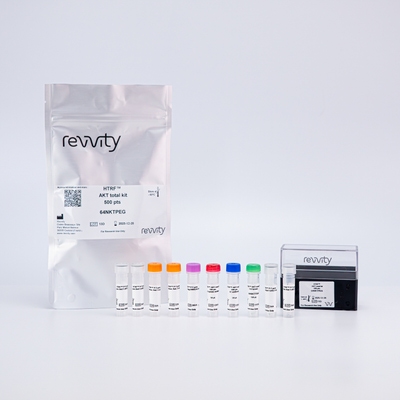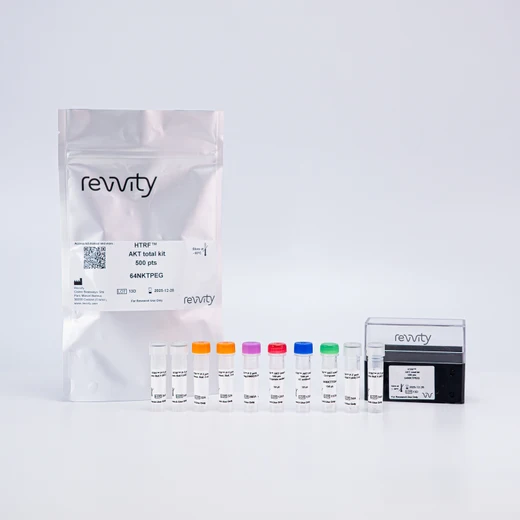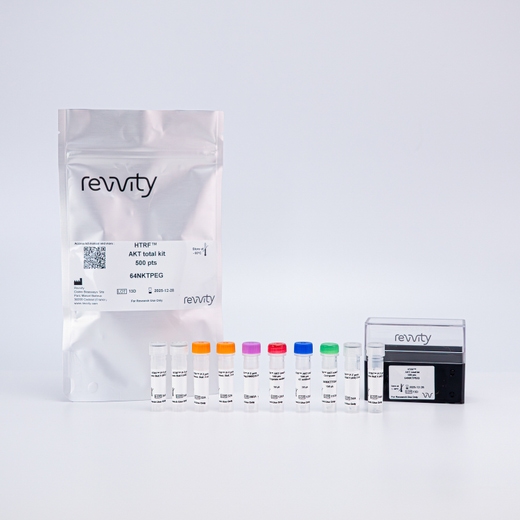

HTRF HUman Total AKT Detection Kit, 10,000 Assay Points


HTRF HUman Total AKT Detection Kit, 10,000 Assay Points






This HTRF kit detects cellular AKT and can be used as a normalization assay for the phospho-AKT kits.
For research use only. Not for use in diagnostic procedures. All products to be used in accordance with applicable laws and regulations including without limitation, consumption and disposal requirements under European REACH regulations (EC 1907/2006).
| Feature | Specification |
|---|---|
| Application | Cell Signaling |
| Sample Volume | 16 µL |
This HTRF kit detects cellular AKT and can be used as a normalization assay for the phospho-AKT kits.
For research use only. Not for use in diagnostic procedures. All products to be used in accordance with applicable laws and regulations including without limitation, consumption and disposal requirements under European REACH regulations (EC 1907/2006).



HTRF HUman Total AKT Detection Kit, 10,000 Assay Points



HTRF HUman Total AKT Detection Kit, 10,000 Assay Points



Product information
Overview
The Total ATK kit is a robust, ready-to-use assay designed to monitor the modulation in expression of all 3 isoforms of AKT, an oncogene controlling apoptosis, cell proliferation, transcription, cell migration, and glucose metabolism. This kit is the ideal companion for our phospho AKT (Ser473 and Thr 308) kits, and is used as a normalization assay.
Specifications
| Application |
Cell Signaling
|
|---|---|
| Brand |
HTRF
|
| Detection Modality |
HTRF
|
| Molecular Modification |
Total
|
| Product Group |
Kit
|
| Sample Volume |
16 µL
|
| Shipping Conditions |
Shipped in Dry Ice
|
| Target Class |
Phosphoproteins
|
| Target Species |
Human
|
| Technology |
TR-FRET
|
| Therapeutic Area |
Metabolism/Diabetes
NASH/Fibrosis
Oncology & Inflammation
|
| Unit Size |
10,000 Assay Points
|
Video gallery

HTRF HUman Total AKT Detection Kit, 10,000 Assay Points

HTRF HUman Total AKT Detection Kit, 10,000 Assay Points

Citations
How it works
Total-AKT assay principle
The Total-AKT assay quantifies the expression level of AKT in a cell lysate. Contrary to Western Blot, the assay is entirely plate-based and does not require gels, electrophoresis or transfer. The Total-AKT assay uses two labeled antibodies: one coupled to a donor fluorophore, the other to an acceptor. Both antibodies are highly specific for a distinct epitope on the protein. In presence of AKT in a cell extract, the addition of these conjugates brings the donor fluorophore into close proximity with the acceptor and thereby generates a FRET signal. Its intensity is directly proportional to the concentration of the protein present in the sample, and provides a means of assessing the proteins expression under a no-wash assay format.

Total-AKT 2-plate assay protocol
The 2 plate protocol involves culturing cells in a 96-well plate before lysis then transferring lysates to a 384-well low volume detection plate before adding Total AKT HTRF detection reagents. This protocol enables the cells' viability and confluence to be monitored.

Total-AKT 1-plate assay protocol
Detection of total AKT with HTRF reagents can be performed in a single plate used for culturing, stimulation and lysis. No washing steps are required. This HTS designed protocol enables miniaturization while maintaining robust HTRF quality.

Assay validation
Total AKT used to control the phosphorylation status of AKT (Ser473)
HEK293 cells (100,000 cells/well) were activated with IGF-1 for 10 min, using the two-plate assay protocol of the Phospho-AKT (Ser473) and Total-AKT assays. As expected, results obtained show a dose-response increase of AKT phosphorylation upon IGF-1 stimulation, while the AKT expression level remains constant.

Simplified pathway
AKT simplified pathway
AKT (or protein kinase B) plays a key role in controlling survival and apoptosis. This serine/threonine protein kinase is regulated by insulin and various growth and survival factors, to work in a wortmannin-sensitive pathway involving PI 3 kinase. When the Pleckstrin Homology (PH) domain of AKT binds to phosphoinositides, AKT can be phosphorylated by two different kinases, PDK1 at threonine 308 and mTORC2 (mammalian target of rapamycin) at serine 473, which switch on AKT activation.

Resources
Are you looking for resources, click on the resource type to explore further.
One technology across all samples
Simplify pathway analysis. Learn how HTRF can do it all, from classic 2D cell models to 3D cell...
Tumor xenograft analysis: HTRF versus Western blot
Don’t miss out on important data
Tumor xenografts are a known staple when...


How can we help you?
We are here to answer your questions.






























